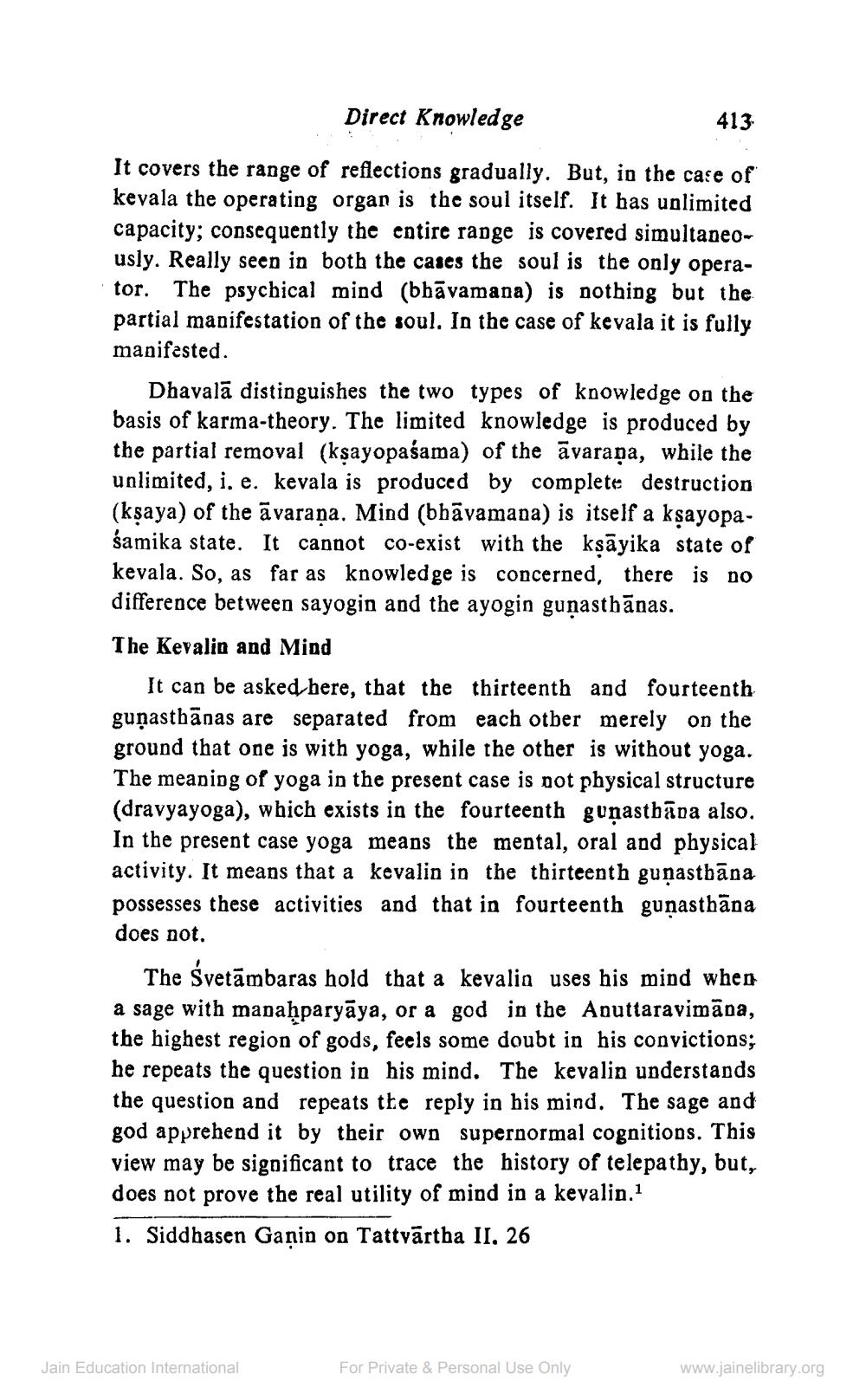________________
Direct Knowledge
413
It covers the range of reflections gradually. But, in the case of kevala the operating organ is the soul itself. It has unlimited capacity; consequently the entire range is covered simultaneously. Really seen in both the cases the soul is the only operator. The psychical mind (bhāvamana) is nothing but the partial manifestation of the soul. In the case of kevala it is fully manifested.
Dhavalā distinguishes the two types of knowledge on the basis of karma-theory. The limited knowledge is produced by the partial removal (kşayopaśama) of the avarapa, while the unlimited, i. e. kevala is produced by complete destruction (kşaya) of the āvaraṇa. Mind (bhāvamana) is itself a kşayopaśamika state. It cannot co-exist with the ksāyika state of kevala. So, as far as knowledge is concerned, there is no difference between sayogin and the ayogin gunastbānas.
The Kevalin and Mind
It can be asked here, that the thirteenth and fourteenth gunastbānas are separated from each otber merely on the ground that one is with yoga, while the other is without yoga. The meaning of yoga in the present case is not physical structure (dravyayoga), which exists in the fourteenth guṇastbāpa also. In the present case yoga means the mental, oral and physical activity. It means that a kevalin in the thirteenth gunastbāna possesses these activities and that in fourteenth gunasthāna does not.
The Svetāmbaras hold that a kevalin uses his mind when a sage with mapaḥparyāya, or a god in the Anuttaravimāpa, the highest region of gods, feels some doubt in his convictions; he repeats the question in his mind. The kevalin understands the question and repeats the reply in his mind. The sage and god apprehend it by their own supernormal cognitions. This view may be significant to trace the history of telepathy, but, does not prove the real utility of mind in a kevalin.1 1. Siddhasen Ganin on Tattvārtha II, 26
Jain Education International
For Private & Personal Use Only
www.jainelibrary.org




